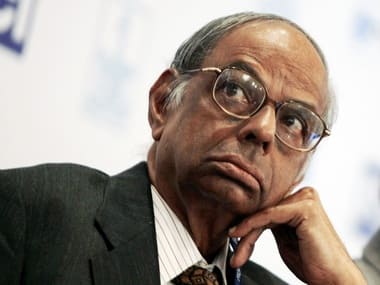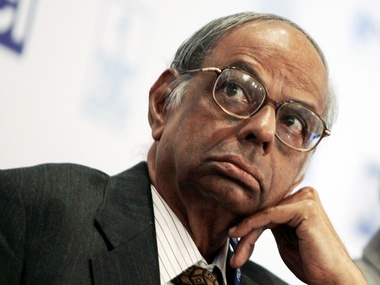No, Mr. Rangarajan, we don’t believe you. That’s the verdict of some private-sector economists about prospects for India’s economic growth in the year ending March 2012.
The chairman of the Economic Advisory Council (EAC) to the Prime Minister announced a downward revision in GDP growth - to 8.2 percent from 9 percent earlier - while releasing the “Economic Outlook 2011-12” in New Delhi.
Agriculture is projected to grow at 3 percent in the 12 months to March 2012, against 6.6 percent last year. Industry, meanwhile, is expected to post 7.1 percent growth, down from 7.9 percent last year. Only the service sector is forecast to report higher growth of 10 percent from 9.4 percent last year.
The council also forecast headline inflation to remain around 9 percent until October, after which, it said, prices would cool down to 6.5 percent by March next year.
The government’s assessment of growth is quite optimistic compared with Morgan Stanley’s forecast, which was also released today. The investment bank forecast India’s growth at 7.2 percent for the same period, lower from the previously estimated 7.7 percent.
It’s not the only one to estimate India’s GDP growth at below 8 percent: Standard Chartered Bank pared its annual growth forecast to 7.7 per cent from 8.1 per cent previously. Early last month, Fitch Ratings also took a dim view, predicting the economy would expand by 7.7 percent.
In its report, Morgan Stanley said: “We believe a combination of factors, including persistently high inflation, higher cost of capital, a cut in fiscal spending to GDP, weak global capital markets environment and slow pace of investment, will cause a further slowdown in growth.”
“We believe that over the next six months, support from all the major growth drivers will wane at the same time. We now see a deeper slowdown in growth than estimated earlier.”
In an interview with CNBC today, Chetan Ahya, co-author of the report, said that “India is heading for the worst growth since the credit crisis.”
A lot depends on whom you want to believe. Most economic indicators currently suggest the odds are in favour of private-sector economists.
True, credit growth - a key indicator of economic health - is still robust (credit expanded by 19.3 percent for the fortnight ending July 15), but as economists often point out, credit growth often lags economic activity by about 4-5 months.
And economic activity has definitely been losing steam, judging by some key indicators.
Growth in automobiles and consumer durables, robust until March this year, has now dwindled to about 5 percent, the Morgan Stanley report said. “All three major components of domestic demand (investment, private consumption and government spending) are now slowing simultaneously,” it added.
Indeed, even bank credit, while currently strong, is off its peak of 24.6 percent seen in the fortnight ending December 31, 2010. It’s quite likely that lending will experience a slowdown in the future.
A Nomura economics note pointed out that India’s Purchasing Manufacturers Index (a gauge of manufacturing activity) fell to a 20-month low of 53.6 in July from 55.3 in June, falling for the third straight month.
“Both the output and new orders indices fell to their lowest levels in 20 months, suggesting that higher interest rates are starting to hurt domestic demand. Forward-looking indicators suggest this fall is not yet over,” the note said.
Given the slump in manufacturing, tax revenues, currently buoyant, will lose momentum, notes Morgan Stanley. That will increase the gap between government spending and revenues.
[caption id=“attachment_51916” align=“alignleft” width=“380” caption=“C Rangarajan heads the Prime Minister’s Economic Advisory Council. Arko Datta/Reuters”]
 [/caption]
[/caption]
Indeed, the EAC acknowledged that India faced a “significant challenge” in achieving its budgeted fiscal targets for the current year, as it forecast the fiscal deficit slightly above projected levels.
The council said the deficit could touch 4.7 percent by March 2012, above the government’s target of 4.6 percent, and advised stronger measures to increase revenue intake and cut spending.
The fact that bond and share markets did not react to the report suggests they already knew that this revision was likely.
Which brings us to the question, what about the rest of the economic numbers? Do the markets believe the government’s estimates? Probably not. For now, the brokerages seem to be more realistic in their assessment of the economy, although they have often been accused of “over pessimism” in the past.
For now though, the money is on the fact that if current economic conditions persist, the government will further lower its estimates sooner or later.
)